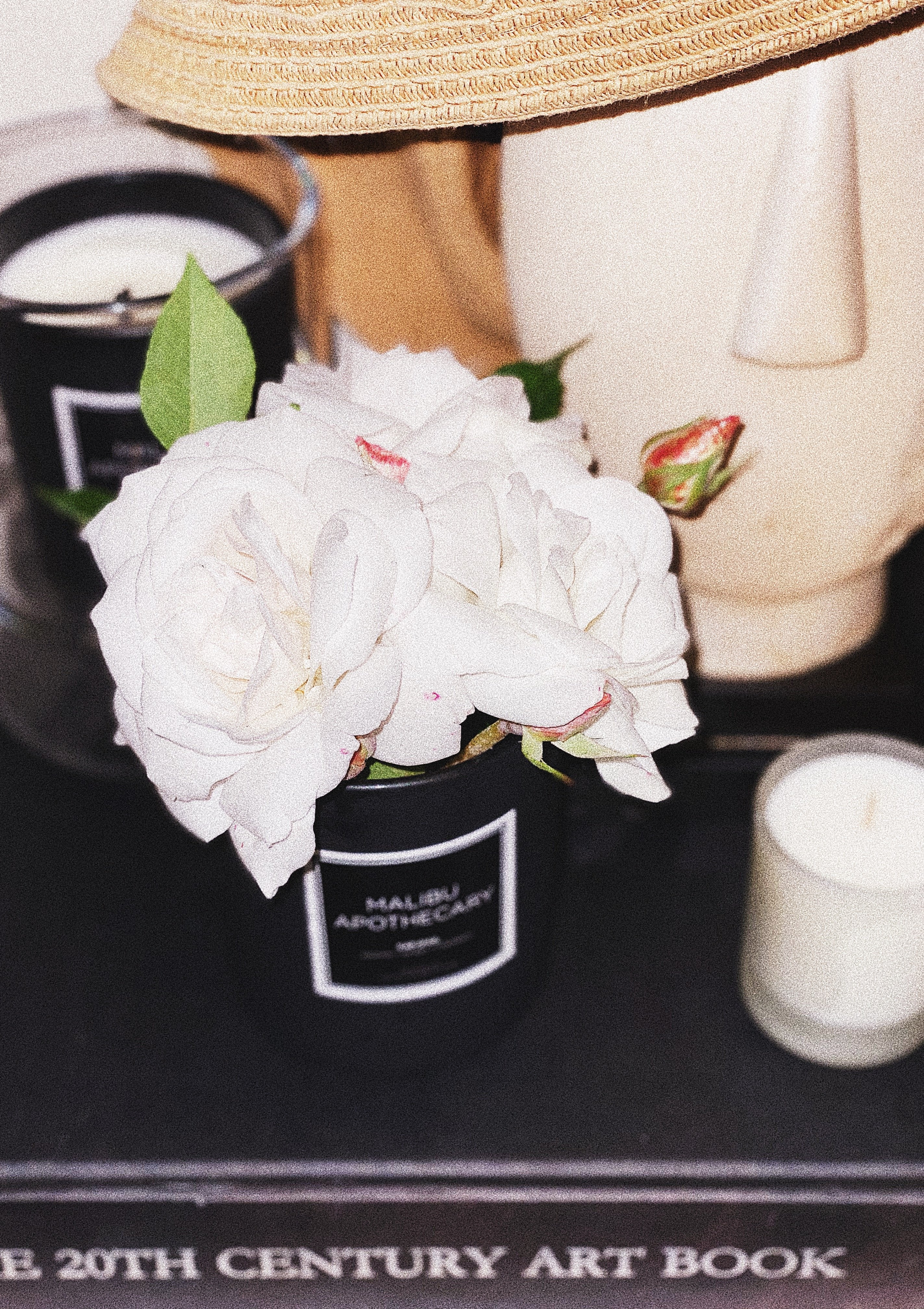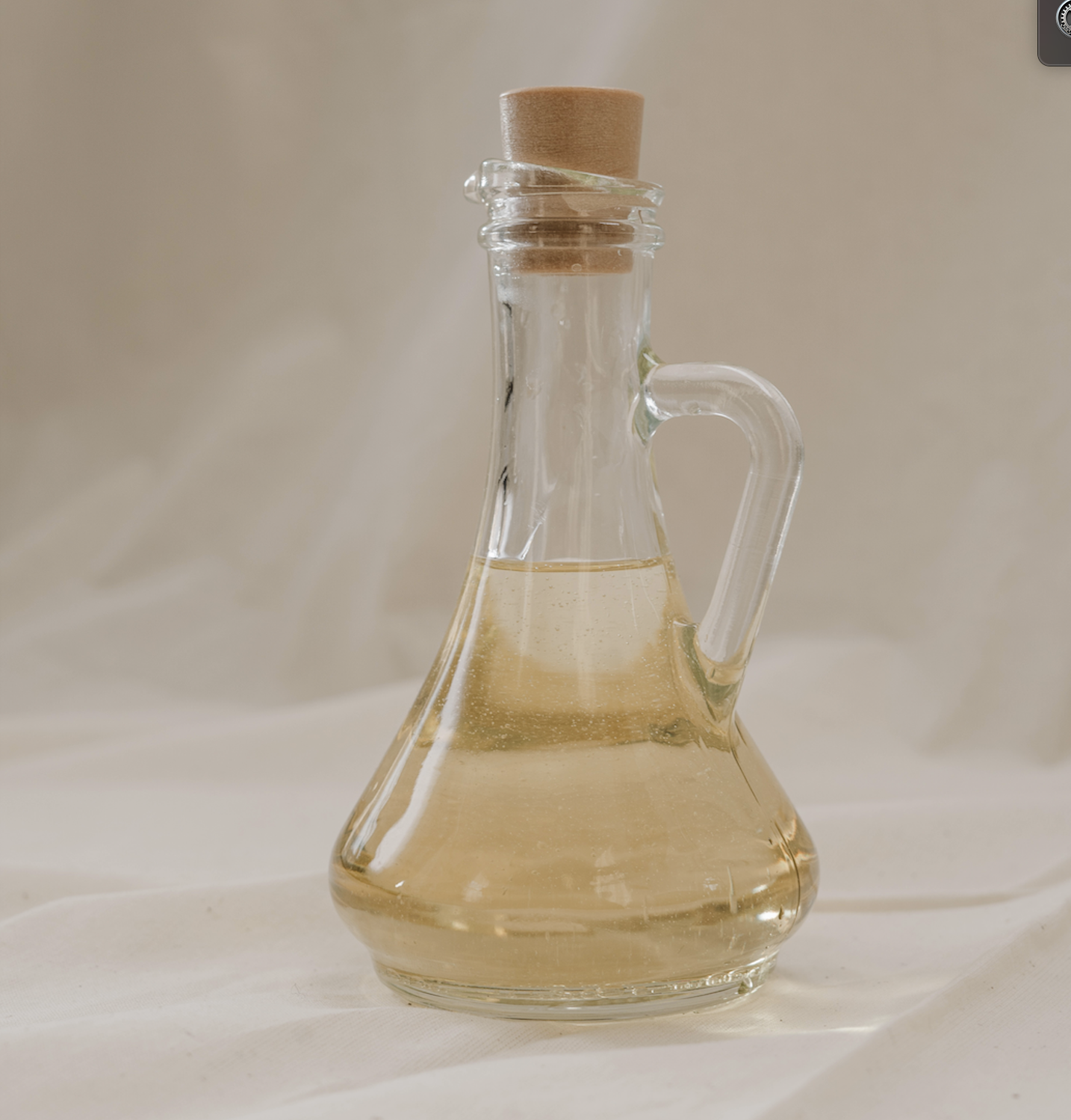A NOTE FROM OUR FOUNDER:
Carefully crafted, each of our clean candles uses a mixture of essential oils, floral and herbal extracts, and fragrance oils. More of an art than a science, there is a delicate balance of notes. The characters of each note dance together like carefully timed choreography. Choosing which scents to combine to evoke an experience is not an easy task. Every candle is coastal-inspired, drawing the notes and names of our favorite beach towns to capture a vacation through fragrance.
The art and science of perfumery require all five of your senses. It is the feeling of a wood's texture, the fragrance of flowers, the experience they exude, and the sensation you get when you first smell the scent. These fragrant impressions capture memories and moments we hold dear to our hearts through a process of creative alchemy.
In an attempt to simplify the complexities of perfume making, I will explain the main components. The perfumer's notes can be broken down into three categories: top notes, heart notes, and bottom notes. Akin to a composer creating a symphony, each works as an instrument that is material to the creation of a beautiful song.
I first learned of these constructs while living in Nice, when I traveled to the small French Riveria town of Grasse. Home to famed perfumeries Fragonard, Molinard, and Galimard, I took my first perfumery class in 2016 at Galimard. Here I remember being taught the different classes of notes and how they were married to create a beautiful composition of fragrance. This was my first opportunity to play with perfumery, and I wanted to craft a perfume with its own unique character, heartbeat, and personality. Each note I chose reflected on my memories, stirring the moods, emotions, and senses of the past. During this rudimentary experimentation, I drew upon my five senses: the feeling of summer when the sun touches your skin, seeing the light hit the sea that created the beautiful shades of blue, smelling the fresh rosemary while stumbling down the rocky paths, drinking the woody-infused wine, or hearing the sound of church bells in the distance at noon. I used bottom notes of Santal, Vanille, and Tonka to capture this warmth of summer. The final product perfectly captured my time living in Nice. Whenever I wish to be transported back to this place and time, I grab my bottle of "Côte d'Azur."
My inspiration for creating Malibu Apothecary was to capture this spirit of vacation through fragrance. Allowing these immersive notes to take you with them in all of their invisible yet living, breathing glory.

While it may appear that I digressed in my technical explanation of perfumery, this actually depicts the art of fragrance. The science of fragrance can be explained as follows.
TOP NOTES:
The top notes, or headnotes, are the first impression your nose receives from the candle or perfume. This shapes the character of the fragrance and leaves you with the initial impact. Typically, these are fresh, fruity, or floral notes such as lemon, lavender, or rose and can be sweet or bitter.
HEART NOTES:
The heart notes add depth to the fragrance while carrying the top notes with them. These middle notes are full-bodied aromas that are generally fruity or floral like jasmine, cardamom, or lemongrass and usually consist of 70% of the total scent.
BOTTOM NOTES:
The epilogue. Though they take the longest to kick in, the base notes usually linger the longest. The base forms the foundation of a fragrance with rich, heavy notes such as vanilla, amber, spices, woods, and musks. These usually characterize the scent and are the most impressionable of the three.
If scent is the strongest trigger of memory, I hope with every candle you are transported to a special moment in time or a beach faraway!
Read more

For our candle addicts with a slight nack for hoarding or a soft spot for the environment, we have compiled the ultimate guide on how to reuse and repurpose your candle containers! HOW TO CLEAN A...

In these times, our homes have now become our home office, our daycare, schools, restaurants, and just about everything else, so why not make it a hotel? You don't need to leave your home to feel...


Leave a comment
All comments are moderated before being published.
This site is protected by hCaptcha and the hCaptcha Privacy Policy and Terms of Service apply.